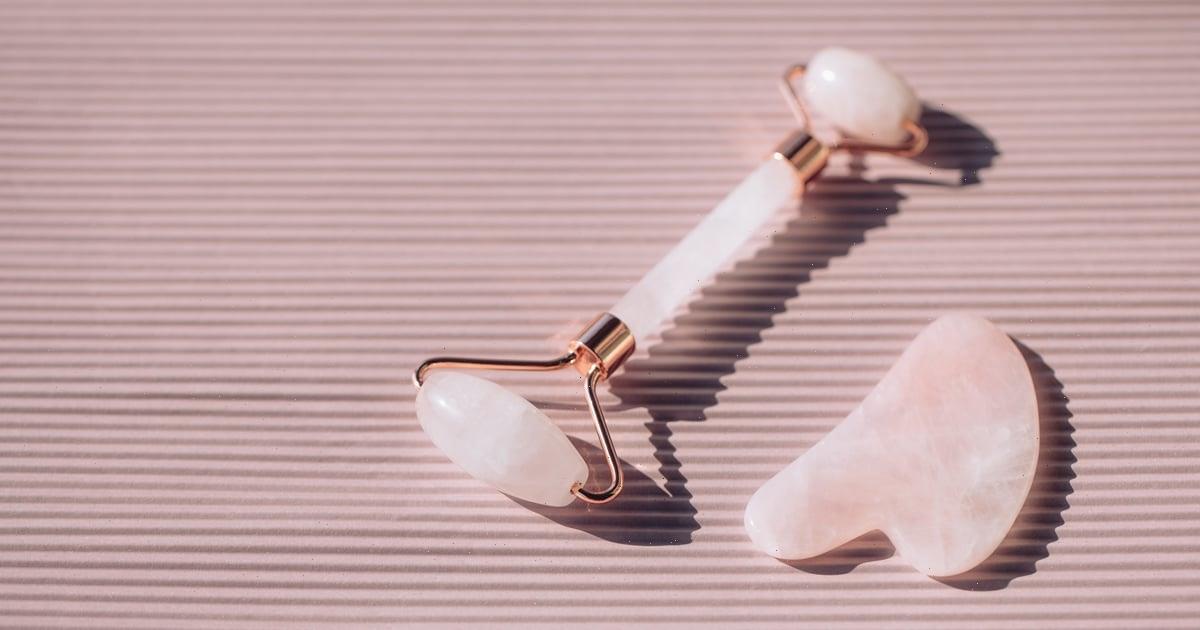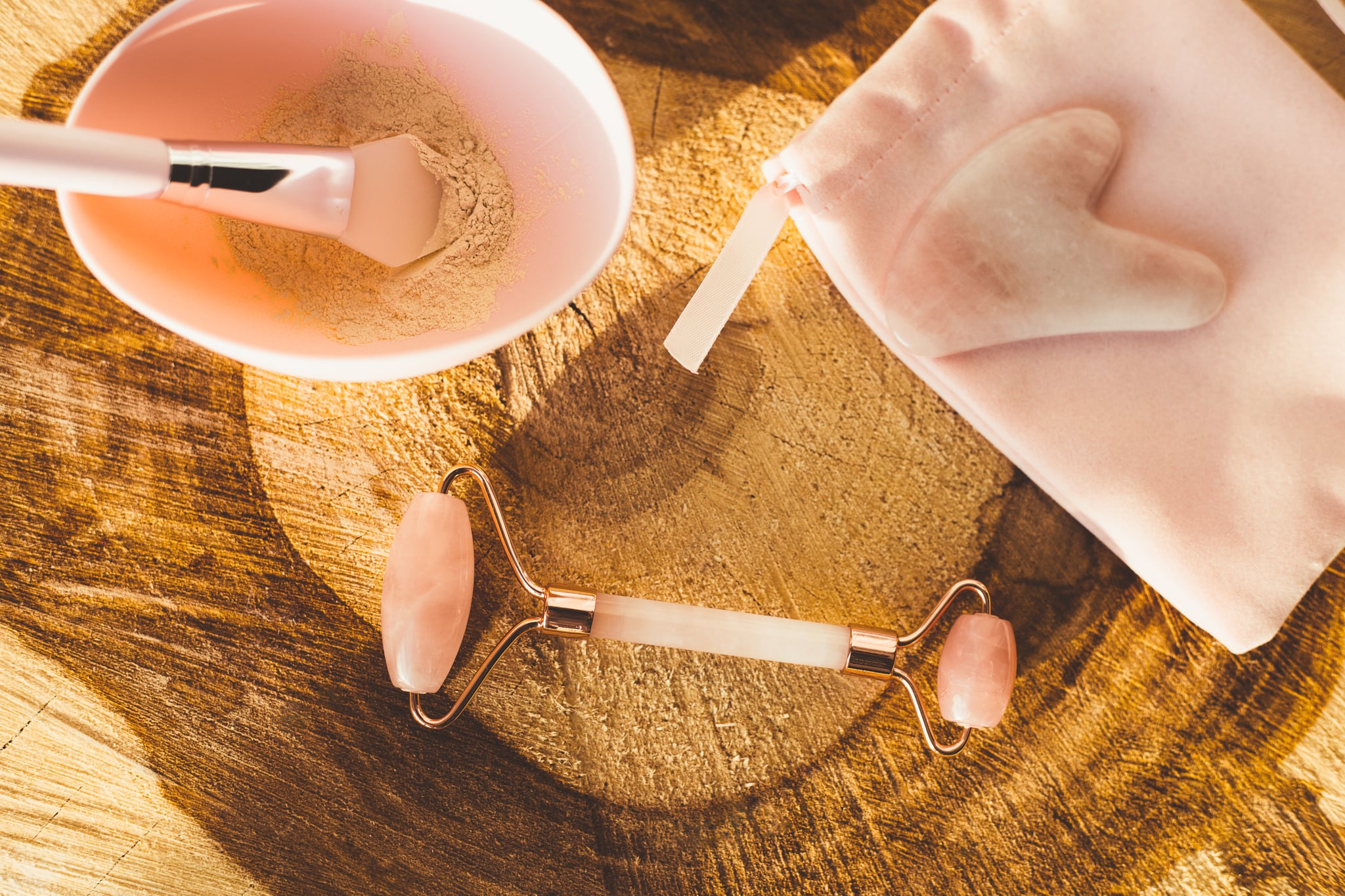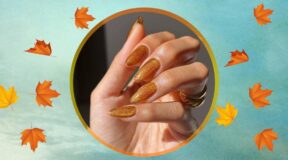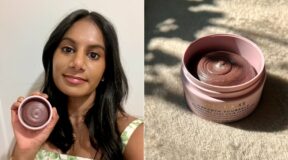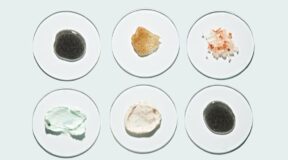Growing up Asian, I distinctly remember one of the beauty rituals my mom enforced: slathering my hair in coconut oil. To ensure my hair was shiny and strong, the chunky coconut lather sat on my head for 15 minutes before rinsing. I disliked the ritual because the scent stunk but it was a home beauty remedy passed on from her mom, and, it did leave my hair with a noticeable sheen. “It’s a Filipino thing,” she’d say.
I also remember trips I’d take with my mom to Chinatown where I’d spot ginseng roots submerged in liquid-filled jars. As a kid, I found them unsettling, but my mom went on about the healing and energizing effects of ginseng, buying practically all the supplements that had the ingredient in them. In her mind, it was a cure-all, like Vicks Vaporub of tubers. To this day, my mother prefers beauty products with ginseng. (She has a stash of ginseng-infused sheet masks.)
I fully embraced these leanings and more. The Asian in me has connected to the Asian in my bottles and serums. To this day, I only purchase Asian-owned brands of sheet masks — just a meticulous curation I’ve honed through the years. I am drawn to what I know are Asian ingredients. Rice sheet masks? I’m in. Green tea products? Great. Ginseng? Even better.
The recent wave of horrific hate crimes directed at the AAPI community caused the beauty industry to have a reckoning. Consumers are noticing brands that are silent about anti-Asian hate and those that go beyond an Instagram post, giving proper credit to Asian practices and ingredients and acknowledging the Asian contribution to beauty.
“Asian beauty practices are incredibly unique, intricate, and are passed down from generation to generation. I learned much of my beauty routine from my mom,” Cocokind founder Priscilla Tsai told POPSUGAR. “While the Asian culture is most often recognized when it comes to Korean or Japanese beauty, the reality is that our culture has helped influence and shape the entire beauty industry tremendously. This comes through from the ingredients we use to how we build the steps to our daily skincare routines.”
Cary Lin, the founder of sustainable beauty brand Common Heir, added: “Asia has definitely emerged as an innovation hub for beauty and skin-care culture. Manufacturers are reimagining these traditional herbs and rituals, and developing some of the most innovative and forward-looking formulas, textures, and ingredients in the industry.”
Unfortunately, some brands go beyond “reimagining,” whitewashing our practices and traditions. It’s not just a beauty industry problem either. (Remember that mahjong debacle?) But as the AAPI community goes through a tough time, it’s more important than ever to give credit where it’s due.
“The AAPI community is not a monolith, but I think we’ve consistently felt underrepresented, harassed, and reminded we don’t belong here,” says Lin. “Representation is a countervailing force against xenophobia, because it offers evidence of belonging. Feeling seen is an emotional experience.”
Asian practices are more than buzzy, on-trend ingredients and gimmicks. They’re centuries-, if not millennia-, worth of traditions passed down from generation to generation and it’s time to start honoring their origins. Here, we compiled some of the most common beauty tools and ingredients with Asian roots.
Jade Rollers
Jade rollers, the typically double-ended massaging tools, are ubiquitous in the beauty market today sold at every retailer from Ulta to Goop. They come in multiple colors and a variety of gemstones — rose quartz, opal, amethyst, or a two-pronged permutation — but jade rollers have been used way before its boom in the US. “Jade rollers have been used by Chinese women for centuries,” certified dermatologist and author of “Asian Beauty Secrets” Marie Jhin, MD, told POPSUGAR. “Jade contains magnesium, iron, and calcium essential for the body. These properties, as well as the coolness of the stone, help discharge internal toxins and re-activate bodily rhythms.”
Gua Sha
Another ancient Chinese staple, a Gua Sha is a massage tool cut from one stone, typically jade. “Gua Sha involves using a stone to massage the face to relieve tension and improve lymphatic drainage and improve circulation,” says Dr. Jhin. By dragging the tool over your face, it helps stimulate energy and reduce inflammation. Plus, draining the lymphatic system also drains toxins, which reduces puffiness.
Sheet Masks
The serum-soaked tissue-thin masks that usually come in individual packets have a history beyond the arrival of K-beauty. The first variants of a sheet mask were used by Japanese geishas. According to Elle, an 1813 manual of skin-care and make-up tips for geishas entitled Miyakofuzoku Kewaiden or “Capital Beauty and Style Manual,” includes descriptions of the first sheet mask. The outlet reported that it included “instructions to dampen a piece of kimono silk with distilled flower water and place it on the face,” which, in practice, is what makes up a sheet mask. Today, there are countless iterations made of materials from foil to rubber with all kinds of permutations of ingredients.
Turmeric
Turmeric is definitely more than a kitchen staple. More and more beauty companies are utilizing the properties of the Ayurvedic yellow spice native to South Asia. Turmeric is one of the key ingredients in Cocokind’s products and Tsai says that turmeric is one of those beauty ingredients that “are extremely common” that “stem directly from Asian beauty practices and play a significant role in various Asian cultures.” According to Cocokind, it’s been used for over six millennia for its anti-inflammatory and antiseptic properties. Plus, its active ingredient curcumin is a polyphenol (which is packed with antioxidants) that helps reduce the appearance of dark spots and UV damage. The ingredient can be seen in a range of beauty products from masks to vitamin C serums.
Matcha
According to Dr. Jhin, green tea is another beauty ingredient whose history spans millennia. “Although the tea was serendipitously discovered by Chinese Emperor Shen Nong, 5000 years ago, the unfermented green tea is now a Japanese superhero,” she says. “The polyphenols in green tea neutralize free radicals and help detoxify the body and skin.”
Rice
Did you ever try that rice water TikTok hair trend? There’s a reason rice water why it took off. Rice water has been used by court ladies for their hair since the ancient Heian Period. But it wasn’t just utilized as a hair product. “Rice was an abundant staple in Korea and Japan in the ancient times. Women have been bathing with water used for washing rice for centuries,” says Dr. Jhin. “They found that their skin was more smooth, supple and blemish-free. The rice water was a gentle cleanser and easy to use.” According to Healthline, fermented rice water, or rice wine, helps improve sun damage on the skin. Plus, it releases collagen to keep the skin taut. These days, rice water is infused in products from toners to creams.
Ginseng
“Ginseng originated in Korea and Manchuria, in northern China, and was a precious and expensive elixir of life for royalty and the wealthy,” says Dr. Jhin. In these ancient practices, achieving Qi, or the body’s overall balance, was the goal and ginseng played a huge role in that. “It is revered as an overall tonic to restore the body’s balance. It is rich in phytoestrogens, called ginsenosides, and is a potent anti-oxidant,” she explains. Ginseng halts melanin production which helps with hyperpigmentation. In Dr. Jhin’s book, “Asian Beauty Secrets,” she also mentions ginseng’s anti-inflammatory properties that help with redness and swelling. Plus, she adds that ginseng boosts the circulation of blood vessels, triggering collagen production. More collagen means tighter skin.
Coconut
The fleshy fruit is thought to have two places of origin: one is by the Pacific Ocean, in Southeast Asian countries, and the other, by the Indian Ocean, in South Asia. It’s no surprise then that both Southeast and South Asian cultures have passed on coconut-centric beauty rituals and home remedies for generations. No part of the coconut goes to waste. Coconut water, aside from being refreshing, has antioxidant properties and its electrolytes are moisturizing while coconut oil has a range of benefits from being an effective hair conditioner and to a breath freshener.
Source: Read Full Article
